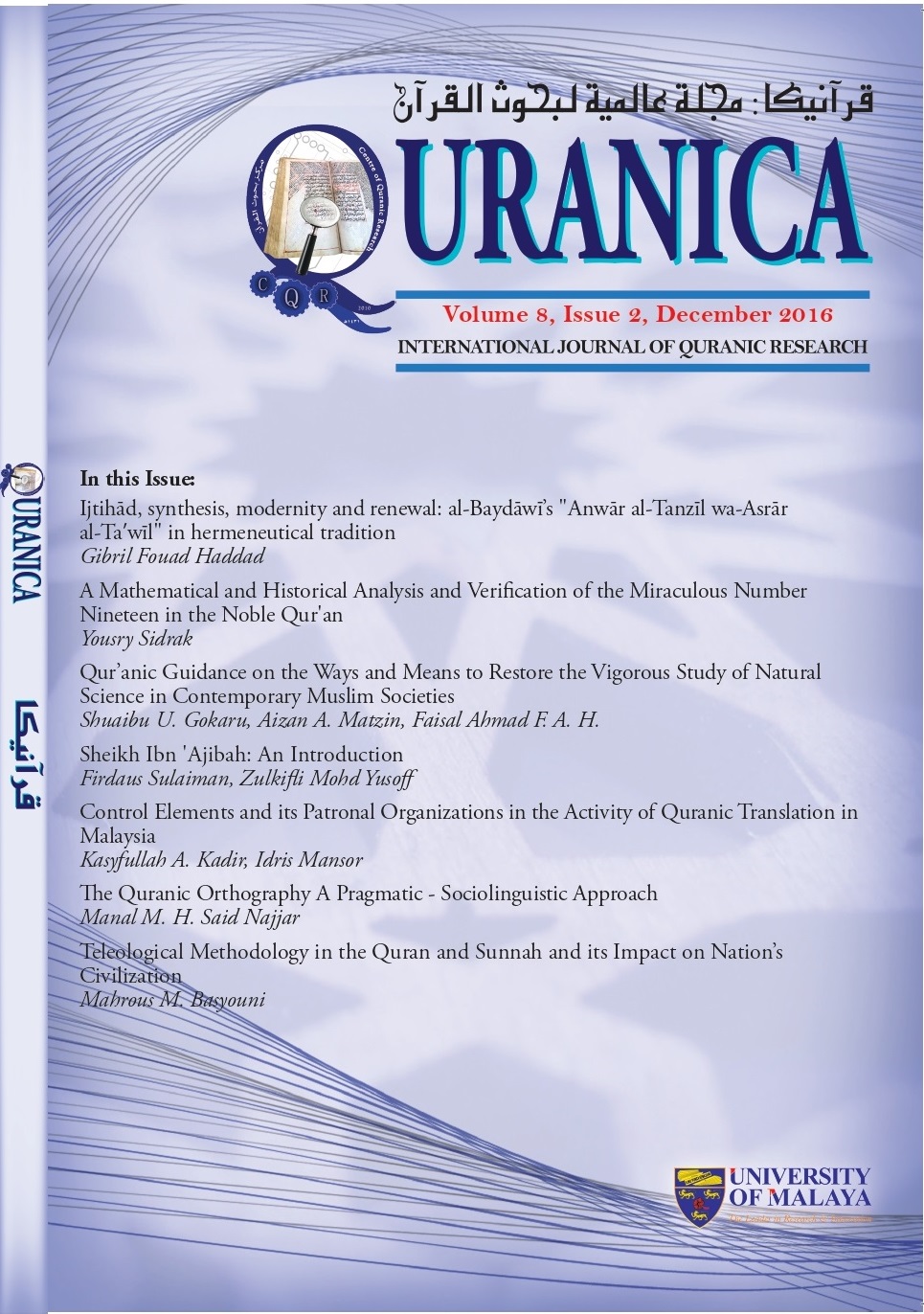The Quranic Orthography A Pragmatic - Sociolinguistic Approach
Main Article Content
Abstract
A close look at the Quranic orthography shows its miraculous nature. This orthography is distinguished by its variation and by establishing its own convention of script. For instance, many words cited in different Quranic verses are written in a way that does not follow the standardized conventional rules of spelling we know today. Such variation is manifested by adding or deleting alphabetical letters, whether pronounced or silent, aiming to render new dimensions of meaning that go in harmony with given contextual situations. In interpretation of this unconventional variation, scholars had different views, among which are: it was due to Prophet Mohammad’s choice and decision, The Prophet's Companions (Sahabah) choices and decisions, or a mistaken practice done by those entrusted to write Quran. However, other scholars believe that words were written this way to copy their original forms in the old history of language, others see that such orthography in Quran and standard dialects help to convey a more comprehensive representation of meaning with more beauty.This paper investigates Quranic orthography particularly the words that break the convention of spelling or pronunciation with an attempt to interpret the purposes and intentions of such variation. In this token, Quranic Orthography contributes in enriching the streams of thought in modern linguistics in this field where social context, for instance, is viewed as an overriding factor in constructing and deconstructing discourse. As stated above, Quran, in addressing people, takes into account all perspectives of their social context even their own orthography. The study, furthermore, recommends utilizing the distinctive orthography of the Quran to be integrated in our regular writing of different variety of texts so as to benefit from such orthographic variations in delivering the meaning intended with all its dimensions. Withstanding the fact that the Quranic orthography has and enjoys its strength of convention since the time of Prophet Mohammad. Therefore, the study stresses employing the Quranic orthography with its particularity in conveying meaning to develop language orthography and to enrich the today conventions of writing.
Downloads
Article Details
Disclaimer
QURANICA makes every effort to ensure the accuracy of all its contents. However, opinions, discussions, views and recommendations are expressed in this journal do not necessarily reflect the official policy of QURANICA or views of its editors or publishers. Therefore, QURANICA and its publishers will not be liable for any controversy may be arisen. The journal reserves the right, at its sole discretion, to change its terms and conditions of publications.
Copyright
It is a condition of publication that manuscript submitted to the journal have not been published, accepted for publication, nor simultaneously submitted for publication elsewhere. By submitting a manuscript, the author(s) agrees that copyright for the article is transferred to the publisher, if and when the manuscript is accepted for publication.
